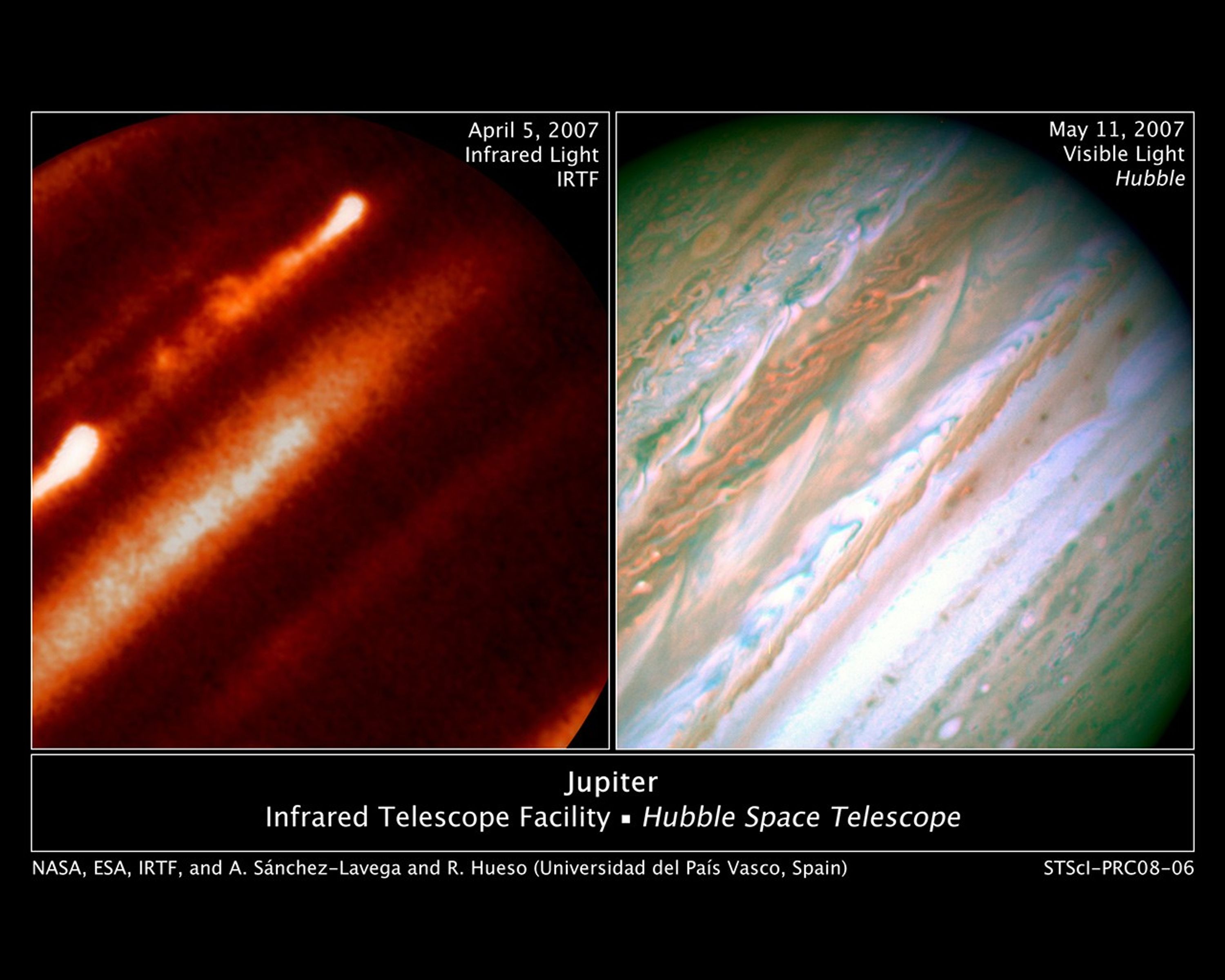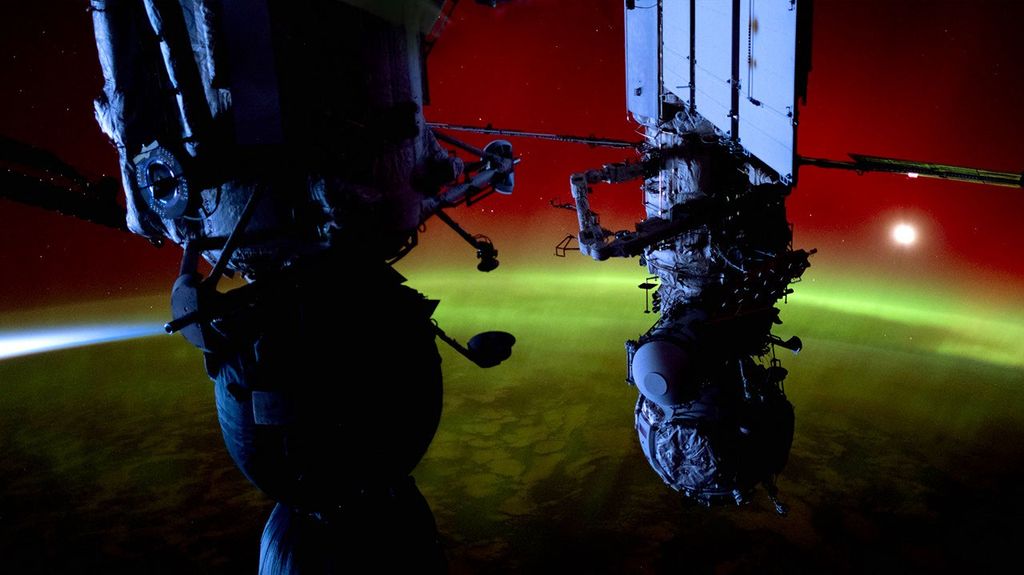1 min read
Hubble/IRTF Composite Image of Jupiter Storms

The background image is from Hubble Space Telescope and shows the turbulent pattern generated by the two plumes on May 11, 2007 (upper left part of Jupiter). The two bright plumes detach in the superimposed small infrared image obtained at the NASA-IRTF facility a month before, on April 5, 2007.
About the Object
- R.A. PositionR.A. PositionRight ascension – analogous to longitude – is one component of an object's position.The semi-major axis of Jupiter's orbit about the Sun is 5.2 Astronomical Units (778 million km or 483 million miles).
- DistanceDistanceThe physical distance from Earth to the astronomical object. Distances within our solar system are usually measured in Astronomical Units (AU). Distances between stars are usually measured in light-years. Interstellar distances can also be measured in parsecs.The planet has a diameter of roughly 88,789 miles (142,984 km) at the equator.
About the Data
- Data DescriptionData DescriptionProposal: A description of the observations, their scientific justification, and the links to the data available in the science archive.
Science Team: The astronomers who planned the observations and analyzed the data. "PI" refers to the Principal Investigator.IRTF Data (inset): Other data used in this composite image were taken on April 5, 2007 with the NASA Infrared Telescope Facility (a 3.0 meter telescope at Mauna Kea, Hawaii). The image was taken through a medium-band filter centered at 2.3 microns; six exposures of 1 second each were taken with the NSFCam2 instrument. HST Data: HST Proposal: 10782 I. de Pater, M. Wong, P. Marcus, and X. Asay-Davis (University of California, Berkeley). - InstrumentInstrumentThe science instrument used to produce the data.HST>WFPC2 and IRTF>NSFCam2 (inset)
- Exposure DatesExposure DatesThe date(s) that the telescope made its observations and the total exposure time.May 11, 2007 (HST) and April 5, 2007 (IRTF)
- FiltersFiltersThe camera filters that were used in the science observations.WFPC2: 410 nm, 502 nm, and 673 nm NSFCam2 (inset): 2.3 microns
- Object NameObject NameA name or catalog number that astronomers use to identify an astronomical object.Jupiter
- Object DescriptionObject DescriptionThe type of astronomical object.Planet
- Release DateJanuary 23, 2008
- Science ReleaseInternal Heat Drives Jupiter’s Giant Storm Eruption
- Credit

Color Info
Color InfoA brief description of the methods used to convert telescope data into the color image being presented.
WFPC2 image: Blue: F410 nm Green: F502 nm Red: F673 nm
Related Images & Videos

Internal Heat Drives Jupiter's Giant Storm Eruption
Detailed analysis of two continent-sized storms that erupted in Jupiter's atmosphere in March 2007 shows that Jupiter's internal heat plays a significant role in generating atmospheric disturbances. Understanding this outbreak could be the key to unlock the mysteries buried in...
Share
Details
Last Updated
Aug 17, 2025
Contact
Media
Claire Andreoli
NASA’s Goddard Space Flight Center
Greenbelt, Maryland
claire.andreoli@nasa.gov

































